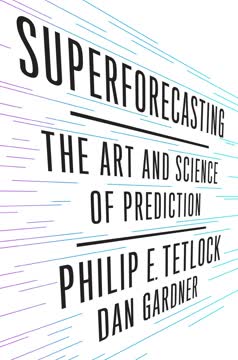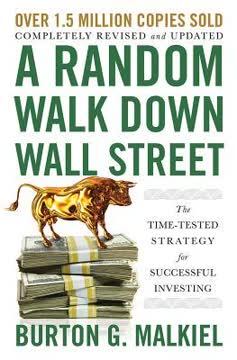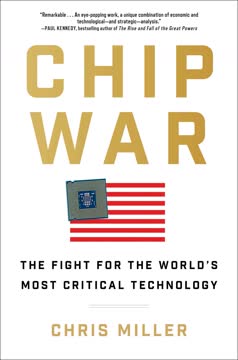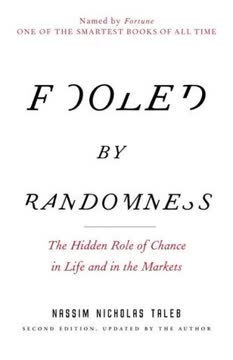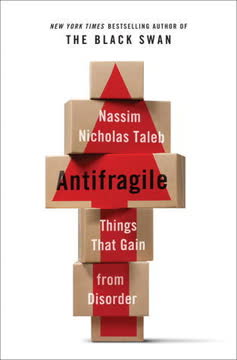重点摘要
1. 黑天鹅:具有巨大影响的不可预测事件
“我们所称的黑天鹅(并将其大写)是具有以下三个特征的事件:首先,它是一个离群值,因为它超出了常规预期的范围,因为过去没有任何东西可以令人信服地指出它的可能性。其次,它具有极端的影响。第三,尽管它是一个离群值,但人类的本性使我们在事后为其发生编造解释,使其变得可解释和可预测。”
黑天鹅塑造了我们的世界。 这些罕见的、不可预测的事件具有极端的后果,对历史、科学、金融和技术产生了巨大的影响。例子包括:
- 互联网的兴起
- 9·11袭击
- 2008年金融危机
- 青霉素的发现
我们对黑天鹅视而不见。 我们的大脑无法应对这种规模的随机性和不确定性。我们倾向于:
- 低估极端事件的可能性
- 高估我们预测和控制未来的能力
- 在黑天鹅事件发生后编造虚假的叙述来解释它们
为未知做好准备。 与其试图预测黑天鹅,不如专注于建立能够在波动和不确定性中保持稳健甚至受益的系统和策略。这种思维方式的转变对于在日益复杂和互联的世界中导航至关重要。
2. 叙述谬误:我们从随机性中创造故事的倾向
“叙述谬误指的是我们有限的能力去看待一系列事实而不将其编织成解释,或者等同地,强加一个逻辑链接,一个关系箭头。”
我们是讲故事的动物。 我们的大脑不断寻找模式并创造叙述来理解周围的世界。这种倾向导致:
- 过度简化复杂事件
- 错误归因因果关系
- 忽视随机性和偶然性
警惕事后解释。 在黑天鹅事件发生后,专家和评论员急于解释为什么它是不可避免的。这些解释通常是:
- 基于事后偏见
- 忽视替代可能性
- 给人一种虚假的可预测性
接受不确定性。 与其强迫每个事件都符合一个整齐的故事:
- 要习惯说“我不知道”
- 考虑多种可能的解释
- 认识到偶然性和随机性在塑造结果中的作用
3. 中庸之地 vs. 极端之地:两种截然不同的随机性世界
“在极端之地,不平等是如此之大,以至于一个单一的观察结果可以不成比例地影响整体或总量。”
中庸之地: 物理属性和简单系统的领域。
- 以钟形曲线(正态分布)为特征
- 由平均值主导,极少有极端离群值
- 例子:身高、体重、卡路里消耗
极端之地: 复杂系统和社会现象的领域。
- 以幂律和分形分布为特征
- 由极端事件和黑天鹅主导
- 例子:财富分配、书籍销售、战争中的伤亡
认识你所在的世界。 我们许多最重要的领域(经济、金融、地缘政治)属于极端之地,但我们常常将它们视为中庸之地。这导致:
- 低估风险
- 对预测过于自信
- 易受黑天鹅影响
4. 游戏谬误:将地图误认为领土
“赌场是我所知道的唯一一个概率已知、高斯(即钟形曲线)且几乎可计算的人类冒险。”
游戏 vs. 现实。 游戏谬误是指认为游戏和模型中结构化的随机性准确代表了现实生活中更混乱的不确定性。
简化的危险:
- 在极端之地领域使用高斯模型
- 过度依赖过去的数据来预测未来事件
- 忽视“未知的未知”和模型风险
接受复杂性。 与其试图将世界纳入简单的模型:
- 认识到我们知识的局限性
- 对多种情景和可能性持开放态度
- 将模型作为工具,而不是完美的现实代表
5. 认知傲慢:高估我们所知道的
“我们对自己认为知道的东西表现出明显的傲慢。我们确实知道很多,但我们有一种内在的倾向,认为我们知道的比实际多一点,这一点足以偶尔让我们陷入严重的麻烦。”
过度自信是危险的。 我们一贯高估我们知识和预测的准确性,导致:
- 低估风险
- 过度冒险
- 易受黑天鹅影响
理解的错觉。 我们常常认为我们对复杂系统(如经济或地缘政治)的理解远比实际要好。这种错误的自信可能导致:
- 糟糕的决策
- 忽视警告信号
- 未能为意外事件做好准备
培养谦逊。 认识到你知识和专业的局限性:
- 对新信息和观点持开放态度
- 定期质疑你的假设
- 接受不确定性是现实的基本方面
6. 归纳问题:从观察中学习的局限性
“考虑每天被喂食的火鸡。每一次喂食都会坚定火鸡的信念,即每天被友好的人类喂食是生活的一般规则,‘为其最佳利益着想’,正如政客所说的那样。在感恩节前的星期三下午,火鸡会遇到意想不到的事情。它的信念将被修正。”
过去的表现不能保证未来的结果。 归纳问题突出了使用过去的观察来预测未来事件的局限性,特别是在复杂系统中。
火鸡问题: 仅仅因为某事在过去一直发生,并不意味着它会无限期地继续。这适用于:
- 金融市场
- 地缘政治稳定
- 技术进步
有限的知识: 我们永远无法确定我们是否已经观察到所有可能的结果或理解复杂系统中的所有相关变量。
应对归纳的策略:
- 专注于稳健性而非预测
- 考虑多种情景和可能性
- 为意外事件和范式转变做好准备
7. 反脆弱性:从波动和压力中受益的系统
“有些东西受益于冲击;它们在暴露于波动、随机性、混乱和压力源时茁壮成长,并喜欢冒险、风险和不确定性。”
超越稳健性。 虽然稳健的系统可以承受冲击,但反脆弱的系统在暴露于波动和压力时实际上会改善和变得更强。
反脆弱性的例子:
- 生物系统(免疫系统、肌肉)
- 进化和自然选择
- 一些经济和金融策略
利用随机性。 与其试图消除波动和不确定性,不如设计能够从中受益的系统:
- 鼓励小失败以防止大失败
- 建立冗余和过度补偿
- 让自己暴露于可控的压力源以建立韧性
应用: 反脆弱性的概念可以应用于:
- 个人发展和学习
- 商业和组织战略
- 风险管理和投资
8. 杠铃策略:结合极端风险规避和小规模投机
“我有一个分辨骗子和真正有技能的人的技巧。我让他们检查一个简单的点:证据缺失和缺失证据之间的区别。”
杠铃方法。 这种策略结合了两个极端:
- 极端风险规避(85-90%的资产)
- 小规模、高风险、高潜在回报的赌注(10-15%的资产)
好处:
- 防范负面黑天鹅
- 暴露于正面黑天鹅
- 避免“傻瓜”中间地带
超越投资的应用:
- 职业:稳定的工作+创业项目
- 教育:核心技能+实验性学习
- 研究:既定方法+高风险探索
接受选择权。 杠铃策略允许你在限制下行风险的同时从不确定性中受益,使其成为在极端之地导航的强大工具。
9. 专家问题:为什么专家常常无法预测自己的领域
“专家的问题在于他们不知道自己不知道什么。”
专业知识有其局限性。 专家在预测自己领域的事件时往往表现得比普通人甚至外行人更差。这是由于:
- 对自己知识的过度自信
- 视野狭窄
- 难以识别黑天鹅
最容易出现专家失败的领域:
- 经济和金融
- 政治预测
- 技术预测
被随机性愚弄的效应。 在随机性主导的领域(如选股)中的专家可能会因偶然成功,从而对自己的能力产生不应有的信心。
应对专家的策略:
- 对自信的预测持怀疑态度
- 寻求多样化的观点
- 关注专家的实际记录,而不是资历
10. 沉默的证据:扭曲我们对现实感知的未见数据
“失败餐馆的墓地非常沉默:走在曼哈顿中城,你会看到这些温暖的、顾客满座的餐馆,外面停着豪华轿车,等待顾客带着他们的第二任、奖杯配偶出来。老板虽然过度劳累,但很高兴有这么多重要人物光顾他的餐馆。这是否意味着在这样一个竞争激烈的社区开餐馆是有意义的?”
幸存者偏差。 我们倾向于关注可见的成功,而忽视绝大多数的失败,从而导致对现实的扭曲看法。
沉默证据的例子:
- 失败的企业和企业家
- 未出版的作家和艺术家
- 进化中的灭绝物种
影响:
- 高估成功的概率
- 低估风险
- 错误归因成功因素
应对沉默证据:
- 积极寻找失败的故事和数据
- 考虑基准率和总体概率
- 警惕成功公式和“成功秘诀”
最后更新日期:
FAQ
What's The Black Swan about?
- Concept of Black Swans: The Black Swan by Nassim Nicholas Taleb explores rare, unpredictable events with massive impacts, termed "Black Swans." These events are often rationalized after they occur, creating a false sense of predictability.
- Human Blindness to Randomness: Taleb discusses how humans tend to ignore randomness, focusing instead on known factors, which leads to a flawed understanding of the world.
- Implications for Knowledge and Prediction: The book critiques traditional methods of prediction, especially in finance and economics, advocating for a more empirical approach to understanding uncertainty.
Why should I read The Black Swan?
- Relevance to Modern Life: Taleb's insights are crucial in today's unpredictable world, challenging conventional wisdom and encouraging critical thinking about risk.
- Unique Perspective on Events: The book offers a fresh view on historical events, prompting readers to reconsider their understanding of success and failure.
- Practical Advice: Taleb provides actionable strategies for navigating uncertainty, emphasizing preparation for unexpected events in life and business.
What are the key takeaways of The Black Swan?
- Embrace Uncertainty: Accept uncertainty as a fundamental aspect of life and focus on being robust to unexpected events rather than trying to predict them.
- Importance of Negative Evidence: Taleb highlights the value of negative evidence, cautioning against drawing conclusions solely from observed data.
- Avoid Overconfidence: The book warns against overconfidence in knowledge and predictions, urging skepticism towards expert claims.
What is the "Black Swan" concept in The Black Swan?
- Definition of a Black Swan: A Black Swan is a highly improbable event with a massive impact, often rationalized in hindsight, illustrating the unpredictability of significant occurrences.
- Characteristics of Black Swans: These events are unpredictable and lie outside regular expectations, often ignored until they occur.
- Examples in History: Taleb cites events like the 9/11 attacks and the 2008 financial crisis as Black Swans, demonstrating their unforeseen yet profound effects.
How does The Black Swan define "Mediocristan" and "Extremistan"?
- Mediocristan: This environment is characterized by predictable events following a normal distribution, where individual instances have little impact on the overall outcome.
- Extremistan: In contrast, Extremistan involves environments where rare events have disproportionate impacts, such as wealth distribution or book sales.
- Implications for Understanding Risk: Taleb emphasizes the importance of distinguishing between these environments to better approach risk and uncertainty.
What is the "narrative fallacy" in The Black Swan?
- Definition of Narrative Fallacy: This fallacy involves creating coherent stories from random events, leading to a distorted perception of reality.
- Impact on Decision Making: Simplified narratives can result in poor decision-making by ignoring complex realities and true risks.
- Examples in History: Taleb provides historical examples where narratives have led to misconceptions, urging a deeper understanding beyond surface stories.
What is the "ludic fallacy" mentioned in The Black Swan?
- Definition of Ludic Fallacy: The ludic fallacy is the mistaken belief that real-life uncertainty can be understood through simplified models, like those used in games.
- Examples of Misapplication: Taleb compares the controlled environment of a casino to real-life unpredictability, highlighting the inadequacy of game models for complex situations.
- Consequences of the Fallacy: Overconfidence in predictions based on simplified models can lead to disastrous outcomes, as they fail to account for rare, high-impact events.
What is epistemic arrogance in The Black Swan?
- Definition of Epistemic Arrogance: This refers to the overconfidence individuals have in their knowledge and predictive abilities, leading to underestimations of uncertainty.
- Impact on Decision-Making: Such arrogance can result in poor decisions, as people underestimate the likelihood of rare but impactful events.
- Self-Reflection: Taleb encourages self-reflection to assess one's own epistemic arrogance, promoting more informed and cautious decision-making.
What is the "barbell strategy" mentioned in The Black Swan?
- Investment Approach: The barbell strategy involves allocating a large portion of assets to very safe investments and a small portion to highly speculative opportunities.
- Mitigating Risks: This strategy minimizes risk while allowing for potential high rewards, particularly effective in unpredictable environments.
- Practical Example: An investor might keep 90% of their portfolio in low-risk assets and 10% in high-risk stocks, balancing safety with the chance for extraordinary gains.
What is the "scandal of prediction" discussed in The Black Swan?
- Definition of the Scandal of Prediction: This refers to the poor track record of experts in forecasting significant events, often ignored or rationalized by authorities.
- Historical Context: Taleb cites failed predictions, like those before the 2008 financial crisis, to illustrate the limitations of expert knowledge.
- Consequences of Overconfidence: Overconfidence in forecasting can lead to catastrophic outcomes, prompting a more cautious approach to decision-making.
What role does "silent evidence" play in The Black Swan?
- Definition of Silent Evidence: Silent evidence refers to unrecorded information and outcomes, particularly failures, that distort our understanding of success and risk.
- Impact on Historical Narratives: History often overlooks failures, creating a skewed perception of reality by focusing only on successes.
- Importance in Decision Making: Recognizing silent evidence is crucial for informed decisions, as it provides a more accurate understanding of risks and outcomes.
What are the best quotes from The Black Swan and what do they mean?
- "History does not crawl, it jumps.": This quote emphasizes the sudden and unpredictable nature of significant historical changes.
- "The problem is not that we don’t know, but that we don’t know that we don’t know.": It highlights the limitations of our knowledge and the dangers of ignorance.
- "We are more concerned with the visible than the invisible.": This reflects the human tendency to focus on apparent factors, often ignoring underlying complexities.
评论
《黑天鹅》以其挑衅性的观点和非传统的写作风格使读者两极分化。许多人赞扬塔勒布的博学和原创思维,认为这本书令人耳目一新且富有洞见。另一些人则批评他的写作重复且傲慢。尽管对作者语气的反应不一,大多数人都同意黑天鹅事件的核心概念引人入胜且具有现实意义。读者欣赏这本书对传统风险和预测思维的挑战,尽管有些人认为其结构和清晰度有所欠缺。
Incerto Series
Similar Books





